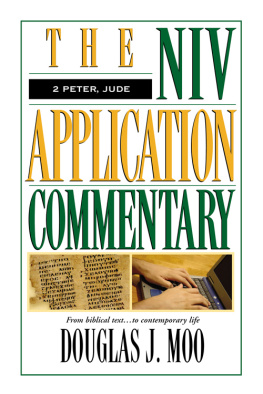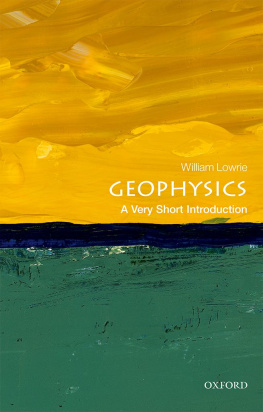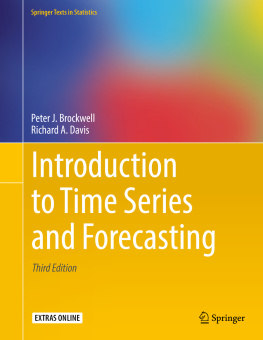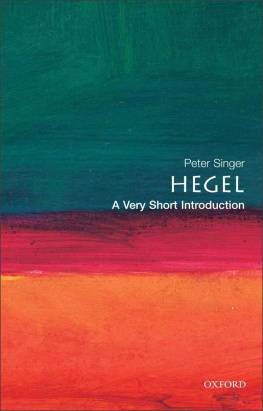Peter M. Shearer - Introduction to Seismology
Here you can read online Peter M. Shearer - Introduction to Seismology full text of the book (entire story) in english for free. Download pdf and epub, get meaning, cover and reviews about this ebook. year: 2019, publisher: Cambridge University Press, genre: Children. Description of the work, (preface) as well as reviews are available. Best literature library LitArk.com created for fans of good reading and offers a wide selection of genres:
Romance novel
Science fiction
Adventure
Detective
Science
History
Home and family
Prose
Art
Politics
Computer
Non-fiction
Religion
Business
Children
Humor
Choose a favorite category and find really read worthwhile books. Enjoy immersion in the world of imagination, feel the emotions of the characters or learn something new for yourself, make an fascinating discovery.

- Book:Introduction to Seismology
- Author:
- Publisher:Cambridge University Press
- Genre:
- Year:2019
- Rating:3 / 5
- Favourites:Add to favourites
- Your mark:
- 60
- 1
- 2
- 3
- 4
- 5
Introduction to Seismology: summary, description and annotation
We offer to read an annotation, description, summary or preface (depends on what the author of the book "Introduction to Seismology" wrote himself). If you haven't found the necessary information about the book — write in the comments, we will try to find it.
Introduction to Seismology — read online for free the complete book (whole text) full work
Below is the text of the book, divided by pages. System saving the place of the last page read, allows you to conveniently read the book "Introduction to Seismology" online for free, without having to search again every time where you left off. Put a bookmark, and you can go to the page where you finished reading at any time.
Font size:
Interval:
Bookmark:
Introduction to Seismology
Third Edition
The Third Edition provides a concise yet approachable introduction to seismic theory, designed as a first course for graduate students or advanced undergraduate students. It clearly explains the fundamental concepts, emphasizing intuitive understanding over lengthy derivations, and outlines the different types of seismic waves and how they can be used to resolve Earth structure and understand earthquakes.
New material and updates have been added throughout, including ambient noise methods, shear-wave splitting, back-projection, migration and velocity analysis in reflection seismology, earthquake rupture directivity, and fault weakening mechanisms. A wealth of both reworked and new examples, review questions and computer-based exercises in MATLAB/Python gives students the opportunity to apply the techniques they have learned to compute results of interest and to illustrate Earths seismic properties. More advanced sections, which are not needed to understand the other material, are flagged so that instructors or students pressed for time can skip them.
Peter M. Shearer is Professor of Geophysics at Scripps Institution of Oceanography, University of California, San Diego. He has written more than 200 scientific papers on various aspects of seismology, is a member of the National Academy of Sciences, and is currently president of the Seismological Society of America. He has taught the Introductory Seismology course at Scripps for over 25 years.
... a concise and practical survey text that does a fine job of covering the basics ... it is ideally suited for an intermediate to advanced undergraduate class ...
Shearer has a knack for clear explanations and for making otherwise difficult concepts easy to understand.
As an introductory course textbook for upper-level undergraduate students, it may be the best textbook available now.
The fundamental concepts are clearly explained, emphasizing intuitive understanding ...
... an excellent introduction for non-seismologists to grasp concepts behind seismological techniques.
Introduction to Seismology
THIRD EDITION
Peter M. Shearer
University of California, San Diego


University Printing House, Cambridge CB2 8BS, United Kingdom
One Liberty Plaza, 20th Floor, New York, NY 10006, USA
477 Williamstown Road, Port Melbourne, VIC 3207, Australia
314321, 3rd Floor, Plot 3, Splendor Forum, Jasola District Centre, New Delhi 110025, India
79 Anson Road, #0604/06, Singapore 079906
Cambridge University Press is part of the University of Cambridge.
It furthers the Universitys mission by disseminating knowledge in the pursuit of education, learning, and research at the highest international levels of excellence.
www.cambridge.org
Information on this title: www.cambridge.org/9781107184473
DOI: 10.1017/9781316877111
First edition Cambridge University Press 1999
Second edition P. Shearer 2009
Third edition Peter M. Shearer 2019
This publication is in copyright. Subject to statutory exception and to the provisions of relevant collective licensing agreements, no reproduction of any part may take place without the written permission of Cambridge University Press.
First edition published 1999
Second edition published 2009
6th printing 2014
Third edition published 2019
Printed in the United Kingdom by TJ International Ltd. Padstow Cornwall, 2019
A catalogue record for this publication is available from the British Library.
Library of Congress Cataloging-in-Publication Data
Names: Shearer, Peter M., 1956 author
Title: Introduction to seismology / Peter M. Shearer (University of California, San Diego).
Description: Third edition. | Cambridge ; New York, NY : Cambridge University Press, [2019] | Includes bibliographical references and index.
Identifiers: LCCN 2018053753 | ISBN 9781107184473
Subjects: LCSH: Seismology. | Seismology Textbooks.
Classification: LCC QE534.2 .S455 2019 | DDC 551.22dc23
LC record available at https://lccn.loc.gov/2018053753
ISBN 978-1-107-18447-3 Hardback
ISBN 978-1-316-63574-2 Paperback
Additional resources for this publication at www.cambridge.org/Shearer3ed
Cambridge University Press has no responsibility for the persistence or accuracy of URLs for external or third-party internet websites referred to in this publication and does not guarantee that any content on such websites is, or will remain, accurate or appropriate.
Since the first edition of Introduction to Seismology appeared in 1999, there have been many advances in the field, and a number of other seismology texts have been published. However, there remains a need for a readable, concise introduction to the quantitative aspects of seismology that is designed specifically for classroom instruction, and I hope my book continues to fill this niche.
Over the last 10 years, I have continued teaching the beginning seismology class at University of California, San Diego and have received feedback from my students, as well as other instructors who have been using the book. The third edition is my attempt to expand on some subjects, clarify parts of the book that have proven confusing, and update the discussion of current research results. Major changes and additions from the second edition include the following:
- section describing waveform cross-correlation of ambient noise
- expanded discussion of seismic migration, including its relation to back-projection and adjoint inversion
- reworked and expanded anisotropy section, including shear-wave splitting analysis methods
- updates to the source chapter, including greater discussion of directivity and fault weakening mechanisms
- more worked examples throughout the text
- computer code examples now in Python rather than Fortran
To quicken the pace, many results are described without detailed proofs or derivations of equations. In these cases, the reader is usually referred to other sources for more complete explanations. Generally, I have attempted to provide practical descriptions of the main concepts and how they are used to study Earth structure. Some knowledge of physics and vector calculus is assumed, but in an effort to make the book self-contained, most of the key concepts are reviewed in the appendices. Although some current research results are presented, I have concentrated more on fundamental principles and key data sets in an effort to avoid rapid obsolescence after this book goes to press.
The emphasis in the student exercises is not on deriving equations (which few seismologists spend much time doing anyway) but on using techniques explained in the text to compute results of interest and to illustrate some of Earths seismic properties. Since computer programming skills are often a necessity for performing seismology research, I have included a number of computer-based assignments. These are designed to give a taste of real research problems, while requiring only .
Font size:
Interval:
Bookmark:
Similar books «Introduction to Seismology»
Look at similar books to Introduction to Seismology. We have selected literature similar in name and meaning in the hope of providing readers with more options to find new, interesting, not yet read works.
Discussion, reviews of the book Introduction to Seismology and just readers' own opinions. Leave your comments, write what you think about the work, its meaning or the main characters. Specify what exactly you liked and what you didn't like, and why you think so.









